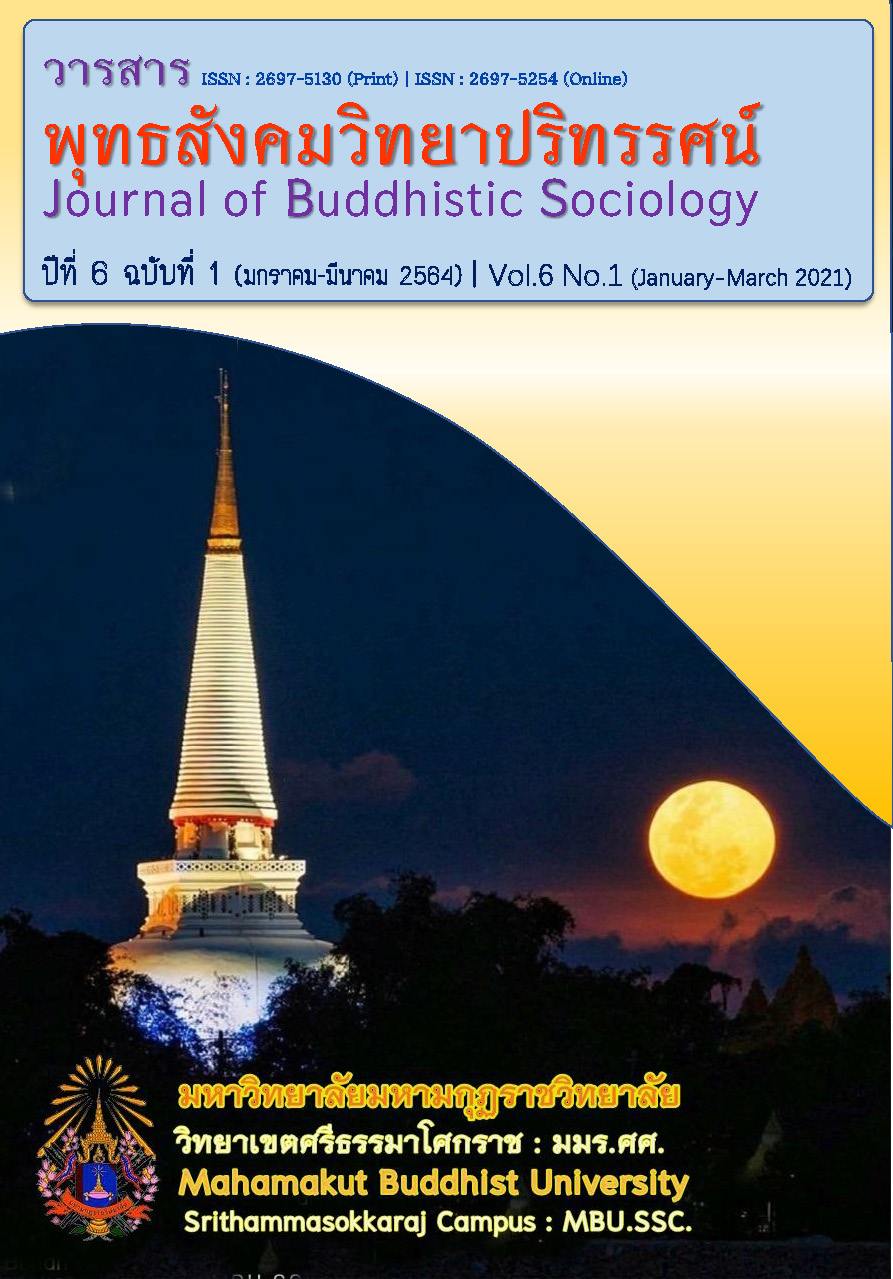หน้าที่ของการกในภาษาฮินดี และความหมายในภาษาไทย
Main Article Content
บทคัดย่อ
บทความนี้มีวัตถุประสงค์เพื่อศึกษาหน้าที่ของการกในภาษาฮินดี และความหมายในภาษาไทย การกทั้ง 8 ประการ ได้แก่
1) กรรตาการก (Nominative case) ทำหน้าที่เป็นประธานในประโยคกรรตุวาจก (Active voice)
2) กรรมการก (Objective case) ทำหน้าที่กล่าวถึงบุคคลหรือสิ่งของที่ถูกกระทำในประโยค (เป็นกรรมในประโยค)
3) กรณการก (Instrumental case) ทำหน้าที่เป็นเครื่องช่วยในการกระทำ
4) สัมปทานการก (Dative case) ทำหน้าที่เป็นกรรมรองในประโยค
5) อปาทานการก (Ablative case) ทำหน้าที่บอกเหตุหรือสาเหตุแห่งการแยกกันของบุคคลหรือสิ่งของ
6) สัมพันธการก (Relative case) ทำหน้าที่แสดงความเป็นเจ้าของ หรือผู้ครอบครอง
7) อธิกรณการก (Locative case) ทำหน้าที่บอกสถานที่ หรือเวลา
8) สัมโพธนการก (Vocative case) ทำหน้าที่ใช้เป็นคำสำหรับร้องเรียก หรือทักทายระหว่างบุคคล
การกทั้ง 8 มีรูปการกหรือคำปรสรรคโดยวางไว้หลังคำนามหรือคำสรรพนาม ยกเว้น สัมโพธนการก วางไว้หน้าคำนาม และโดยทั่วไปความหมายของรูปการกในภาษาฮินดีจะสอดคล้องกับคำบุพบทในภาษาไทย
Article Details
เอกสารอ้างอิง
จำลอง สารพัดนึก. (2539). ไวยากรณ์ฮินดี 1. กรุงเทพมหานคร: โรงพิมพ์มหาจุฬาลงกรณราชวิทยาลัย.
ดวงใจ ไทยอุบุญ. (2556). ทักษะการเขียนภาษาไทย (พิมพ์ครั้งที่ 8). กรุงเทพมหานคร: สำนักพิมพ์แห่งจุฬาลงกรณ์มหาวิทยาลัย.
บำรุง คำเอก. (2552). ภาษาฮินดี:หลักการใช้. กรุงเทพมหานคร: คณะโบราณคดี มหาวิทยาลัยศิลปากร.
ราชบัณฑิตยสถาน. (2546). พจนานุกรมฉบับราชบัณฑิตยสถาน พ.ศ.2542. กรุงเทพมหานคร: นานมีบุ๊คส์พับลิเคชั่นส์.
เรืองเดช ปันเขื่อนขัติย์. (2554). ภาษาศาสตร์ภาษาไทย. กรุงเทพมหานคร: โรงพิมพ์มหาจุฬาลงกรณราชวิทยาลัย.
วิกิพีเดียสารานุกรมเสรี. (2562). ภาษาฮินดี. เรียกใช้เมื่อ 25 กุมภาพันธ์ 2562 จาก http://th.wikipedia.org/w/index.php?title.
สถิตย์ ไชยปัญญา. (2561). ภาษาฮินดีพื้นฐาน 1. กรุงเทพมหานคร: สำนักพิมพ์มหาวิทยาลัยรามคำแหง.
Bidhu Bhusan Das gupta. (1990). Learn Hindi. Calcutta: Das Gupta Prakasha.


